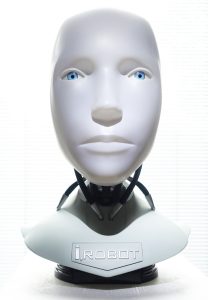2. Types of AI
ANI vs AGI vs ASI
Artificial Narrow Intelligence (ANI)
ANI is programmed to perform a single task. It is AI that is currently readily available on the market for consumers, for example Siri and Google Translate. ANI is capable of completing simple repetitive tasks a lot faster than humans can, for instance checking weather, performing web searches or analysing raw data.

Artificial General Intelligence (AGI)
AGI is the sort of AI that is seen in movies like I, Robot (2004) with Will Smith. Despite machines being able to process data faster than we can, humans have the ability to strategise and tap into our memories to plan decisions. AGI is expected to be able to reason, solve problems, make judgements and plan, to learn and to use prior knowledge in decision-making. This means that AGI can do a variety of tasks instead of focusing on a single narrow objective.

Artificial Super Intelligence (ASI)
ASI hypothetically possesses intelligence far surpassing that of humans. It is purely theoretical at this point in time and there is debate about whether or not this level of AI will ever be achieved or realised.
Predictive vs Generative
Predictive AI uses data to extrapolate and make predictions from previous trends. This type of AI is used heavily in finance to make trades on the stock market, or in science to analyze large amounts of data.
Generative AI generates new data using the data it was trained on, approximating creativity. Generative AI such as Midjourney or ChatGPT have rapidly increased in popularity in recent years.
GANs and CNNs
Generative Adversarial Networks or GAN is a framework used to train AI by making two different neural networks “compete” with one another. A generative AI produces something, like an image, and a predictive AI rates this output for for it’s quality. As training progresses, both models should improve in tandem leading to more refined results than is possible by one network along.
Convolutional Neural Networks or CNNs are a special type of neural network that uses a mathematical operation known as a “convolution” instead of multiplication for some of it’s nodes. This helps a lot in processing 2 dimensional data, and this type of AI is used often for images and movies.

